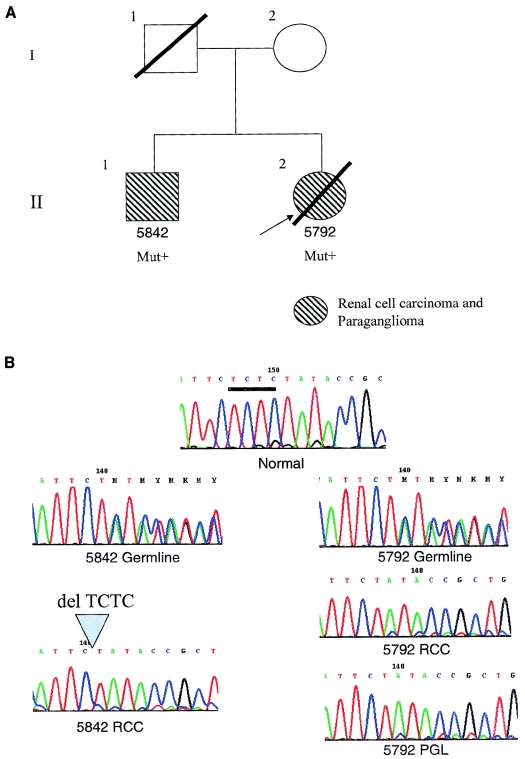Figure 2.
Family 2, with documented PGL and RCC and germline heterozygous SDHB c.847-50delTCTC mutation. A, Pedigree of family 2. The mutation-positive individuals are indicated by “Mut+.” The index patient is II-2 (5792), indicated by the arrow. B, Sequencing chromatogram in the region of nucleotides 845–855 of SDHB. The wild-type sequence from a normal control is in the top panel (“Normal”). The bar below the TCTC denotes the region of deletion. The germline DNA from both the index patient and her brother showed the heterozygous c.847-50delTCTC microdeletion mutation. Note that, because of the nature of the repeats, we cannot ascertain whether the microdeletion is c.847-50delTCTC or c.848-51delCTCT. When the mutant allele is present heterozygously with the wild type (“5842 germline” and “5792 germline”), the reading frame is shifted at the point of microdeletion. When the wild-type allele is lost, as in all three tumors (“5842 RCC,” “5792 RCC,” and “5792 PGL”), the mutant allele remains.

